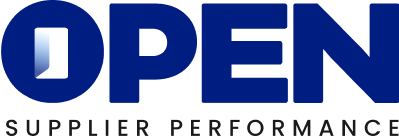Lessons from the Boeing Dreamliner: How to bring visibility into all aspects of supplier quality management
Multiple suppliers coupled with a piece-mealed and disjointed supplier quality management system can be a recipe for disaster. Lack of efficiency and transparency into your supply chain can lead to lost productivity and directly affect your brand’s reputation. One misstep or snag from a supplier (that you didn’t see coming) and the entire brand — especially your customers — feel the effects. One of the most infamous cases of a supply chain transparency failure was the Boeing Dreamliner debacle in the mid-2000s.
In 2007, Boeing, the world’s largest aerospace manufacturer, began production on a next-generation twin-engined 787 called the Dreamliner. The Dreamliner was intended to be a marvel of modern aerodynamics. Featuring a slimmer body style and lighter materials instead of the traditional aluminum, it incorporated engines from Rolls Royce and General Electric. It touted longer flight ranges and less fuel consumption.
Boeing also made headlines with its new production process. Rather than engineering and manufacturing the core parts of the plane as they had done for decades, Boeing would outsource 70 percent of the Dreamliner’s production to 50 suppliers in countries all over the world in a tiered subcontractor system. That’s a lot of cooks in the kitchen. And a lot of cultural and communication differences, plus varying degrees of technology and manufacturing expertise.
When the plane debuted and was ready for its first test flight in 2007, Boeing already had $100 billion in orders from all over the world. The Dreamliner was the fastest-selling and most anticipated plane in aviation history. What could go wrong, right?
The first test flight was scheduled for August 2007, but due to issues up and down the supply chain that halted production, it was pushed back until 2010. The finished product wouldn’t be off the ground until 2013, only to be grounded again for safety issues. Boeing was billions of dollars over budget and years behind schedule.
By delegating the entire production outside of Boeing, which had a proven track record of manufacturing state-of-the-art planes, they surrendered control of the entire process. But aside from the questionable business decision of outsourcing the majority of the project, this story highlights the critical need for complete transparency with your suppliers. By relying almost entirely on outside suppliers, Boeing’s 100+ year reputation and future were on the line — literally. The production line that is.
If you manage multiple suppliers, the stakes are high, but you can make them work with the right technology. The Boeing story has been analyzed ad nauseam in the supply chain world, but at the heart of it lies a core principle of supply chain management that can’t be overstated — ”Develop a supply chain-wide technology strategy that supports multiple levels of decision-making and gives a clear view of the flow of products, services, and information.” In short, a one-stop-shop of visibility.
While Boeing did utilize a web-based quality management tool with an excellent reputation, the supply chain overwhelmed the system. But now, over a decade later, web-based supply chain tools like Open have come a long way. The technology that was available back then only focused on a few pieces of the puzzle. Our tool is a holistic view of all suppliers, a transparent bird’s eye view of the entire process that is:
Want to learn more? Schedule a call Now
Integrated: Connects with your suppliers 24/7, enabling them to become key partners.
- Predictive: Through A.I. and advanced analytics, you can take action before quality issues interrupt the supply chain.
- Real-time: Uncovers and fixes your quality issues in real-time.
- Greater clarity: Allows for a better understanding of your suppliers’ performance, value, capacity, and capabilities.
- Proactive: More data can help your supplier selection be more efficient and effective.
- Adaptable: Dashboards and reports can be adjusted and adapted to fit new company initiatives and goals.
- Reliable: Our team brings a wealth of experience in enterprise-grade software development, continuous improvement, quality assurance, and leading growing organizations.
The moral of this story is not that outsourcing assembly is a bad idea. Of course not. Toyota is famous for it. But the difference between Boeing’s supply chain breakdown and companies like Toyota is that Toyota has tight control over a trusted group of suppliers with transparent communication. A sophisticated quality management tool with an intuitive dashboard can help achieve that.
In hindsight, Boeing’s Dreamliner production approach was unconventional at best and ill-advised at the worst. Lurking in the shadows of all the hype and anticipation of this revolutionary new plane was a supply chain disaster waiting to unfold.
Boeing has moved on, and a different version of the Dreamliner finally rolled out in 2016. But the company learned some hard lessons. Your supply chain doesn’t have to suffer the same fate.
Unfortunately, most companies have been stuck using the same tools for the past 50 years, leading to glaring but solvable problems in their supply chain. Here at Open, we know there is a better way to do supplier quality management, and we’ve proven it.
Regardless of your industry, Open‘s powerful software line can give you a distinct edge in the marketplace. Let’s make your supply chain work for your business again.


